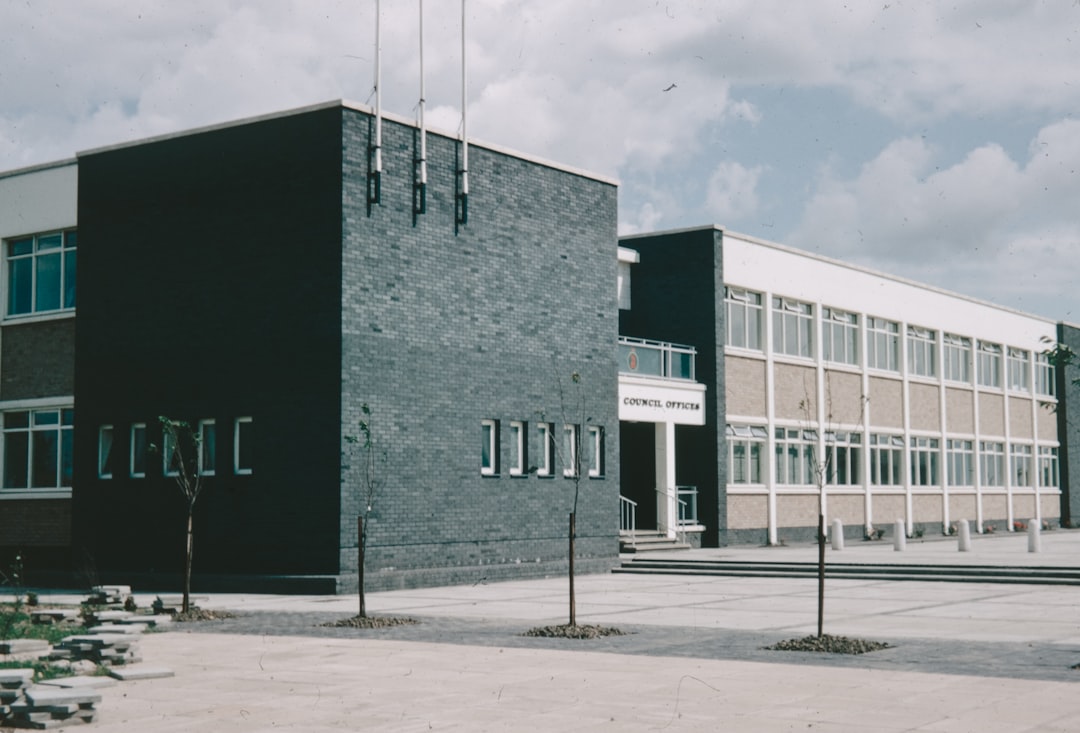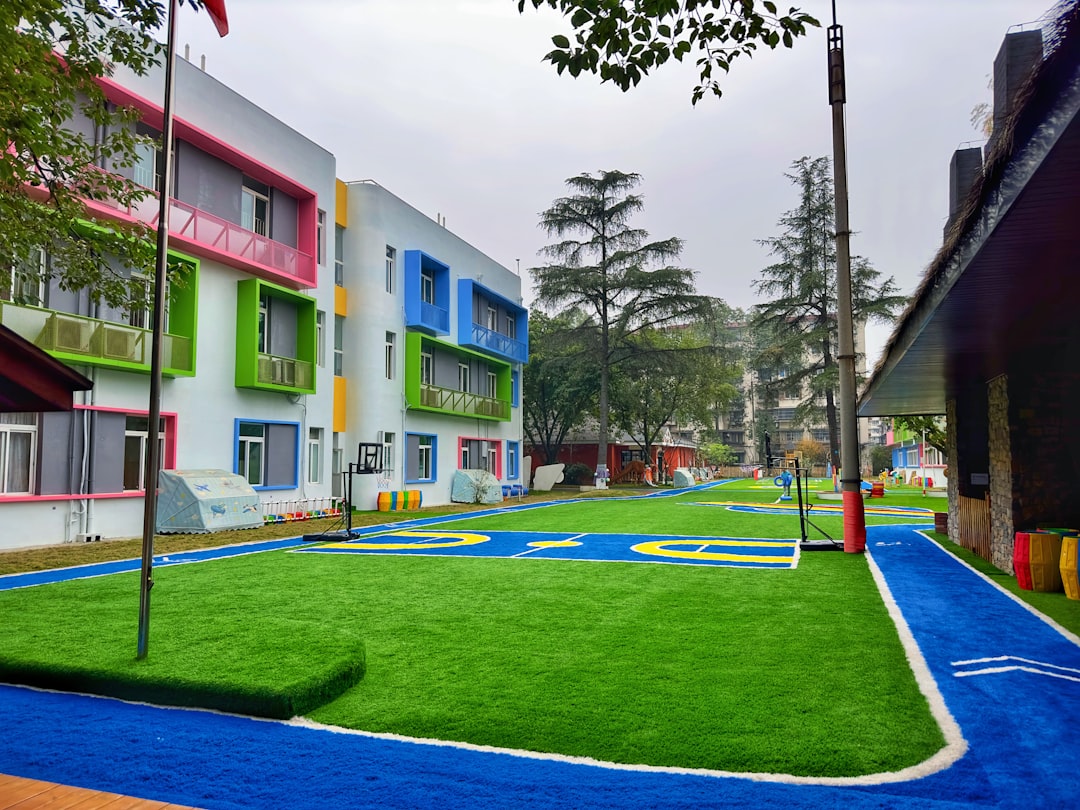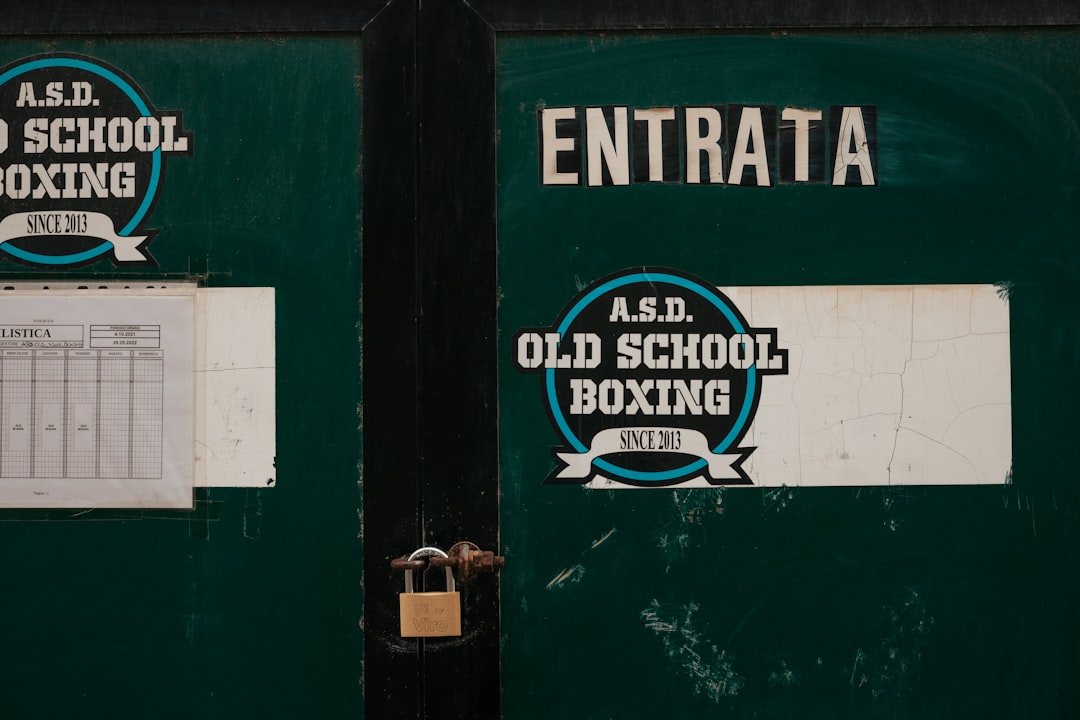

Engage prospects with a scan and streamline customer engagement with FREE QR code marketing tools by Sona – no strings attached!
Create a Free QR CodeFree consultation

No commitment

Engage prospects with a scan and streamline customer engagement with FREE QR code marketing tools by Sona – no strings attached!
Create a Free QR CodeFree consultation

No commitment
QR codes have evolved into a strategic powerhouse for bridging offline engagement with online action in today’s digitally driven world. For elementary schools, they offer a fun, effective way to boost classroom engagement, collect real-time feedback, and streamline administrative processes using simple technology and minimal setup. See school QR ideas.
With rising expectations for digital interactivity and communication, QR codes provide elementary schools a scalable, data-driven solution to enhance learning experiences. They are especially effective for collecting feedback from students, teachers, and parents, empowering educators to make rapid, informed decisions that improve classroom outcomes while overcoming the issue of incomplete or overlooked paper forms.
This guide explains how elementary schools can use QR codes for feedback collection, enrich classroom activities, and unlock actionable data with ease. By linking physical environments with digital platforms, QR codes create immediate benefits for teachers and administrators focused on boosting engagement and tracking key outcomes, ensuring no valuable insights are lost.

QR codes bridge classroom activities, home communication, and digital surveys, making it easier for educators to gather feedback without paperwork or manual data entry. See QR codes in education.
Success with QR-driven feedback starts with clear goals, smart design, and measurable outcomes. Schools should decide what they want to learn, where feedback will be captured, and how results will be used. Then they should select a platform that supports dynamic links, analytics, and secure data handling, such as Sona QR’s product overview. The outcome is a repeatable process that steadily improves participation and data quality.
QR codes can be printed on classroom posters, report cards, or event signage to collect instant feedback from students and parents. A centralized platform lets educators build, deploy, and track every feedback QR code in one place, automating data collection and reducing administrative overhead. When combined with standard tools like Google Forms, QR campaigns can be deployed in minutes and refined continuously.
As you gather results, share a summary of what you heard and what changes you plan to make. Closing the feedback loop builds trust and increases participation over time. Families and students are more likely to scan again when they see that their feedback leads to visible actions.

QR codes address several key challenges by providing instant access to digital input while reducing analog friction. Elementary school communities thrive on communication and responsiveness; QR codes make it simpler for busy families and teachers to share and receive timely information. They convert attention into action at the exact moment it matters.
Unlike emails that get buried or paper that never makes it home, a QR code on a folder, sign, or bulletin board delivers a simple, immediate pathway to contribute. Schools that adopt QR codes typically experience faster turnaround times for surveys, clearer attribution on what communications work, and fewer bottlenecks for data entry and processing.
Using QR-enabled Google Forms can accelerate feedback cycles and surface trends that inform curriculum tweaks, program scheduling, or family support services. Over time, analytics reveal which messages and placements resonate best with different audiences, guiding more inclusive and effective communications.

Different QR code formats meet various feedback and engagement needs. Choosing the right format maximizes response rates and makes data easier to manage. Most schools will rely on web links and forms, but other formats serve targeted workflows like contact exchange or network access.
Static and dynamic QR codes both have a place in elementary school operations. Static codes are fine for permanent, non-trackable destinations such as a school website homepage. Dynamic codes are better for campaigns that need analytics, link updates, or A/B testing. A smart mix keeps costs low while preserving flexibility where it matters.
Dynamic QR codes are particularly useful when the destination might change across the school year, such as rotating surveys or updated event schedules. A centralized dashboard helps administrators manage QR codes, track usage, and maintain link hygiene across campaigns and grade levels.

Deploy QR codes wherever physical and digital engagement intersect. Elementary schools have numerous printed materials and spaces where families and students naturally pause or queue, such as pickup lines, hallways, and library desks, and even digital signage. Converting these moments into simple prompts yields immediate insights without adding complexity.
Strategic placement is about context plus timing. QR codes work best when they are easy to notice and scan, with a short, clear promise of value. Align the call to action to the setting so that parents and students know exactly what they will get by scanning. See back-to-school ideas for inspiration.
Replacing manual forms with QR codes transforms these touchpoints into measurable, interactive moments. Over time, schools can identify which contexts and media drive the best response and adjust their communications strategy accordingly.

Elementary schools can use QR codes in dozens of creative ways, but focusing on feedback collection delivers the fastest impact. Place codes where students and families naturally encounter them, and design each code to answer a specific question that helps improve teaching, activities, or support services.
The following use cases illustrate how QR codes reduce friction and ensure that valuable feedback is captured quickly, accurately, and respectfully. Each example can be configured with age-appropriate language and accessible design.
In each case, QR codes eliminate the need to carry forms home, retype information, or track down responses. Best of all, teachers and administrators can review results in real time and take timely action that builds community trust.
Every scan signals intent, context, and interest: a parent seeking tutoring resources, a student voting for an after-school club, or a volunteer signing up for a book fair. Without organization, these signals are easily lost. With a structured approach, schools can segment feedback for smarter follow-up that respects family preferences and time.
Segmentation should align to your goals and privacy practices. Consider role, location, timing, and topic in order to tailor communications. Use a platform that supports tagging and integration with your communication tools so that relevant updates go to the right people at the right time. Sona is an AI-powered marketing platform that turns first-party data into revenue; for attribution strategy, see Sona’s blog post titled single vs multi-touch attribution models.
Purpose-built QR code solutions help collect actionable, segmented feedback and reduce manual work in triaging responses. Clear tags and integrations support a respectful and efficient feedback culture.
Schools often run communications across multiple channels, which can overwhelm families or dilute participation. QR codes help unify efforts by making each touchpoint interactive and measurable. Parents can participate in seconds, whether they are reading a printed flyer, watching a screen in the lobby, or scrolling a social media group.
A connected QR strategy ensures consistent calls to action, aligned messaging, and reliable analytics across channels. It also provides an equity boost by giving families varied ways to respond: paper plus digital, visual cues plus short links, on-site signage plus take-home materials. Explore Sona QR’s use case library.
A unified QR management platform helps keep links updated, design standardized, and analytics centralized. With consistent deployment and measurement, your school can identify what works best by audience and channel, then adjust accordingly.
Launching a QR feedback initiative is straightforward when you follow a repeatable process. The goal is to move quickly, learn from data, and scale what works across classes and events. Start small, refine the experience, then expand to new touchpoints and use cases.
Below is a practical checklist adapted for elementary school environments. Each step is designed to reduce friction for families and educators while preserving flexibility and compliance. Use a dynamic QR platform to track scans, edit links, and integrate data with your existing tools.
Once you have a successful pilot in one grade or event, replicate the pattern to other classes, supporting staff with templates and a short how-to. Standardization reduces setup time and boosts consistency across the school.
The true value of QR codes comes from tracking interactions and turning feedback into practical changes that support learning. Visibility into scan behavior helps schools understand when and where families and students are most engaged, which guides planning and resource allocation.
To move from raw scans to insight, connect your QR platform to the tools that store student and family data, respecting privacy and consent preferences. Structured tracking and lightweight dashboards give administrators a reliable pulse on community sentiment without manual processes.
Privacy-compliant QR tracking surfaces insights that support responsive and effective school strategies. With dynamic codes, you can continuously refine what you ask, where you ask it, and how you act on the results.
Building momentum with QR codes is a matter of consistency, clarity, and thoughtful iteration. As more classrooms and departments participate, shared templates and guidelines keep the experience familiar for families. A little training goes a long way in raising scan rates and improving data quality.
Choose tactics that match your school’s most common media and moments. Classroom posters, take-home folders, and event signage will often be your highest-impact surfaces. Make scanning feel rewarding by showing participants how their contributions shape outcomes.
For creative deployment, consider printing QR codes on library checkout slips to collect instant book reviews or on music concert programs to gather feedback on sound levels and seating. Both examples create timely data loops that improve next experiences.
Selecting the right QR platform determines how easily you can manage campaigns, protect data, and act on insights. Schools benefit from tools that combine dynamic codes, analytics, and integrations into a single dashboard so non-technical staff can participate with confidence.
When comparing vendors, evaluate whether the platform aligns with your district’s privacy policies and infrastructure. Request a pilot with a small team to test ease of use, reporting, and administrative controls. Look for education-friendly pricing and support.
Schools using dynamic QR codes with integrated analytics often report higher feedback rates and more productive relationships between educators and parents. Platforms like Sona QR can streamline setup and tracking, especially when paired with clear school policies and templates.
Special education programs benefit from QR codes when accessibility and personalization lead the design. With careful implementation, QR codes can support student autonomy, simplify parent communication, and streamline collaboration among teachers, therapists, and service providers.
The key is to align each code with the learner’s needs and family preferences. Use visual cues, simplified language, and multimodal options. Make sure families understand how feedback will be used to support Individualized Education Program goals.
Studies and practitioner accounts indicate that QR codes can boost participation and autonomy in special education when accessibility and privacy are prioritized. Work closely with your special education team to design and test materials before broad rollout.
QR codes deliver speed and convenience, but they must be managed securely to avoid risks such as spoofed codes or unauthorized access. Schools should establish policies for QR creation, approval, and auditing so that only trusted materials reach families and students.
Security starts with link hygiene and extends to user training. Make sure staff and students can recognize official school codes and know how to verify destinations. Keep a record of active codes and destinations to simplify audits and updates.
With robust oversight and permission protocols, QR campaigns can be both effective and secure. Clear governance builds parent trust and protects the integrity of your data.
QR codes have become essential tools for interactive learning, feedback collection, and engagement in elementary schools, directly addressing challenges like lost input, incomplete data, and disconnected communication. When thoughtfully integrated, QR codes help educators, students, and parents connect meaningfully and bring vital insights to the forefront.
From streamlining communication and surfacing high-value feedback to enforcing cybersecurity best practices, QR codes offer more than convenience: they create the transparency and channel consistency necessary for modern learning environments. Implementing a QR code management solution ensures every scan is secure, measurable, and strategically effective, turning everyday interactions into opportunities for deeper engagement and lasting educational outcomes. Start creating QR codes for free.
QR codes have revolutionized elementary schools by transforming traditional feedback collection into an engaging, efficient, and data-driven process. Whether it’s gathering insightful student and parent feedback, enhancing communication, or streamlining teacher assessments, QR codes replace tedious paper forms with instant, mobile-friendly interactions that capture real-time responses and foster a more connected school community. Imagine instantly knowing which teaching methods resonate most or which school events truly engage families—all accessible at your fingertips.
With Sona QR, elementary schools can create dynamic, trackable QR codes in seconds, update feedback campaigns on the fly without reprinting, and analyze every scan to make informed decisions that improve learning outcomes and parent satisfaction. No lost responses, no delayed insights—just smarter, more impactful feedback collection.
Start for free with Sona QR today and turn every scan into meaningful feedback that drives positive change in your school.
QR codes improve student engagement by providing interactive, easy-to-access digital content linked to classroom activities, feedback surveys, and learning resources that students can scan during lessons or at home.
Incorporating QR codes boosts classroom engagement, streamlines feedback collection from students and parents, reduces reliance on paper forms, enables real-time data tracking, and supports informed teaching and administrative decisions.
QR codes link to digital surveys and feedback forms that collect timely student input, enabling educators to track responses by grade, classroom, or event and analyze data through dynamic QR code analytics for actionable insights.
Creative uses include placing QR codes on classroom posters, event signage, newsletters, take-home folders, and digital displays to collect feedback, share event information, and encourage parent-teacher communication during back-to-school activities.
Teachers can place QR codes on whiteboards or classroom doors to gather immediate student feedback on lessons, link to supplemental digital resources, or enable quick participation in polls and quizzes, enhancing interaction and responsiveness.
Dynamic QR codes are preferred for trackable campaigns with analytics and link updates, while static codes suit permanent destinations like school websites; formats include web links, vCards, email or SMS triggers, and Wi-Fi access codes.
Effective placements include classroom doors, exit signs, event programs, report cards, newsletters, library checkout slips, pickup lines, hallways, and digital signage where students and families naturally pause and can easily scan.
QR codes on take-home folders, newsletters, and event materials invite parents to submit questions, feedback, or permissions through standardized digital forms, facilitating timely, organized communication and follow-up.
Schools should ensure QR codes link only to secure, approved domains, regularly audit active codes, train staff and students to recognize official codes, obtain parental consent for data collection, and maintain clear governance to protect privacy.
By replacing paper forms with mobile-friendly digital surveys accessible via QR codes, schools eliminate manual data entry, accelerate feedback collection, and automate tracking, allowing staff to focus more on student support.
Yes, QR codes can deliver accessible, personalized content such as visual surveys, instructional videos, and communication pathways that accommodate diverse learner needs and enhance collaboration among educators, parents, and service providers.
Schools can deploy QR codes linked to short surveys at strategic points like classrooms, events, and newsletters to quickly capture student and parent input, analyze responses by segment, and adjust teaching or programming accordingly.
Platforms like Sona QR offer dynamic QR code generation, analytics, integration with school CRMs and communication tools, and secure data handling to help schools create, monitor, and optimize QR campaigns efficiently.
Dynamic QR codes allow link updates without reprinting, provide real-time analytics on scans by time and location, support A/B testing, and enable better segmentation and follow-up, making them ideal for evolving feedback and event needs.
Schools should define clear goals, choose appropriate QR code types, design and test codes for accessibility, deploy them at high-impact locations with matching messages, track engagement data, and share results to encourage ongoing participation.
Use Sona QR's trackable codes to improve customer acquisition and engagement today.
Create Your FREE Trackable QR Code in SecondsJoin results-focused teams combining Sona Platform automation with advanced Google Ads strategies to scale lead generation

Connect your existing CRM

Free Account Enrichment

No setup fees
No commitment required

Free consultation

Get a custom Google Ads roadmap for your business






Launch campaigns that generate qualified leads in 30 days or less.
